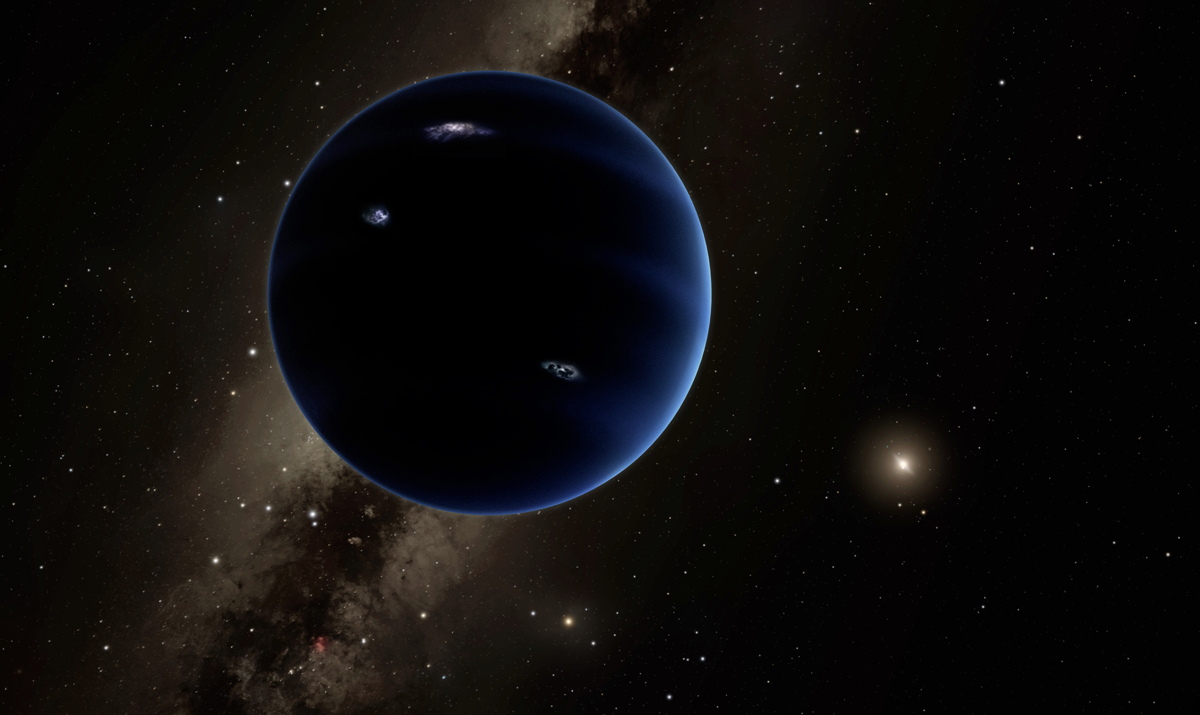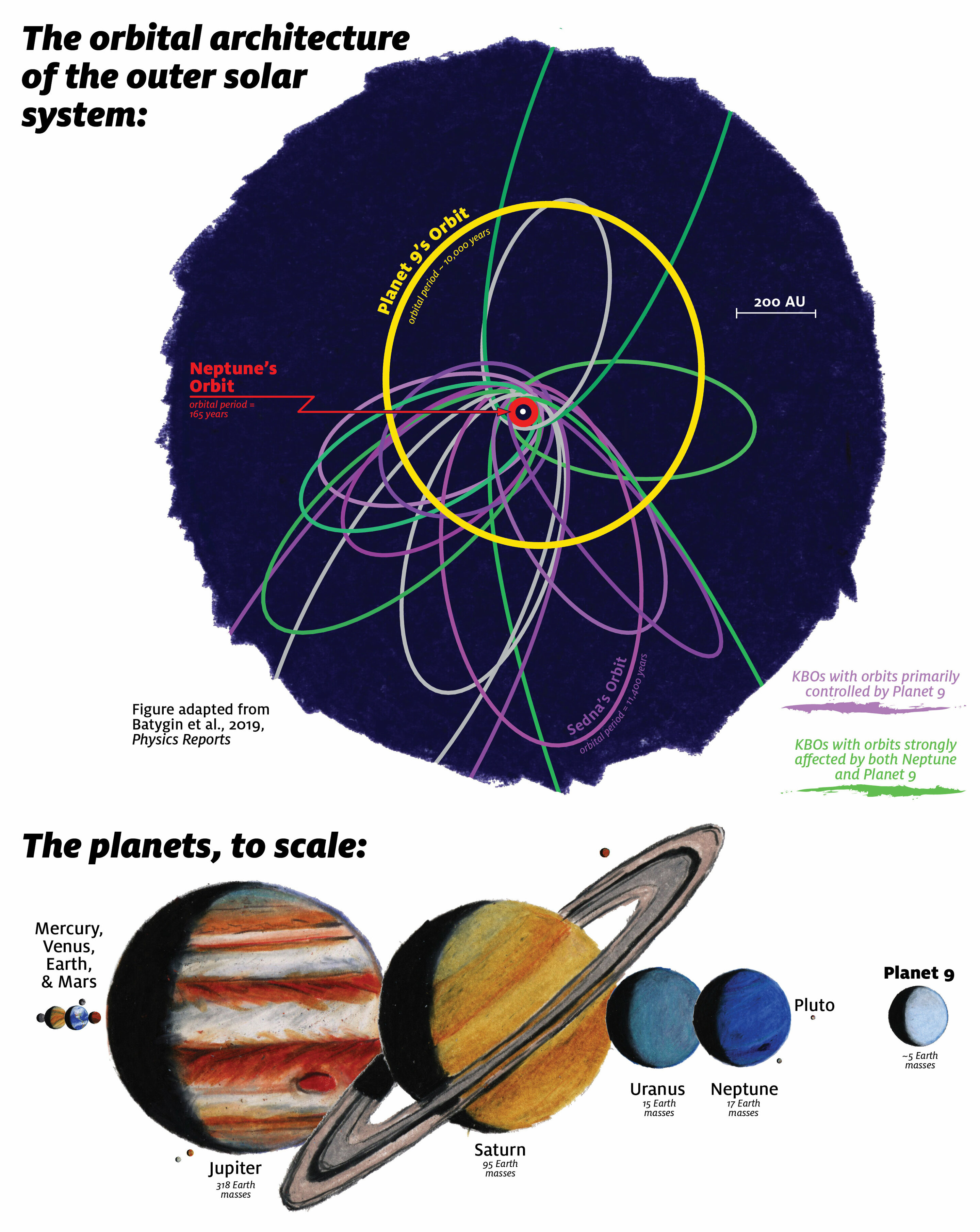Mysterious 'Planet Nine' Is Probably 5 to 10 Times the Size of Earth

There could be a planet hiding out on the distant frontiers of our solar system. And astronomers have published new details about what it probably looks like, if it really exists.
Planet 9, according to a new paper published online Feb. 10 in the journal Physics Reports, is probably five to 10 times the mass of Earth. And it probably travels along an elongated orbit that peaks at 400 times Earth's distance from the sun. That orbit is also likely 15 to 25 degrees off the main orbital plain of our solar system where most planets orbit.
The existence of Planet Nine, as Live Science sister site Space.com previously reported, is an idea that's become popular among astronomers ever since it was first seriously proposed back in 2014. Researchers suspect the planet's existence because of patterns of objects in the Kuiper Belt, a ring of debris in the outer solar system. Those objects tend to clump together in ways that suggest that gravity from something big out there is tugging on them.
And the evidence has only gotten stronger. In a separate paper, published Jan. 22 in The Astronomical Journal, some of the same authors of the Physics Report paper calculated the probability of Planet Nine not existing at just 1 in 500. [Amazing Astronomy: Victorian-Era Illustrations of the Heavens]
Strongly suspecting that the dark planet exists isn't the same thing as knowing it's real, though. The good news is that this new research suggests that Planet Nine is significantly nearer-by than previously thought. But astronomers still have a lot of space in which to search for it.
The authors of the Physics Reports paper did raise, however, the possibility that there's no planet out there at all. They added that however strong the current evidence is, that chance should be "taken seriously."

The likeliest alternative explanation is that humanity's picture of the Kuiper Belt is incomplete and that the objects only appear to cluster because of some bias in efforts to detect them. It's also possible, the authors suggested, that the clustering results from the "self-gravity" of the Kuiper Belt acting on its own objects and does not arise from not some hidden planet's tug.
Sign up for the Live Science daily newsletter now
Get the world’s most fascinating discoveries delivered straight to your inbox.
Still, astronomers have become more convinced by the evidence for Planet Nine in recent years. And now they're making significant progress toward pinpointing it out in space.
- Science Fact or Fantasy? 20 Imaginary Worlds
- 5 Mars Myths and Misconceptions
- Fallen Stars: A Gallery of Famous Meteorites
Originally published on Live Science.











